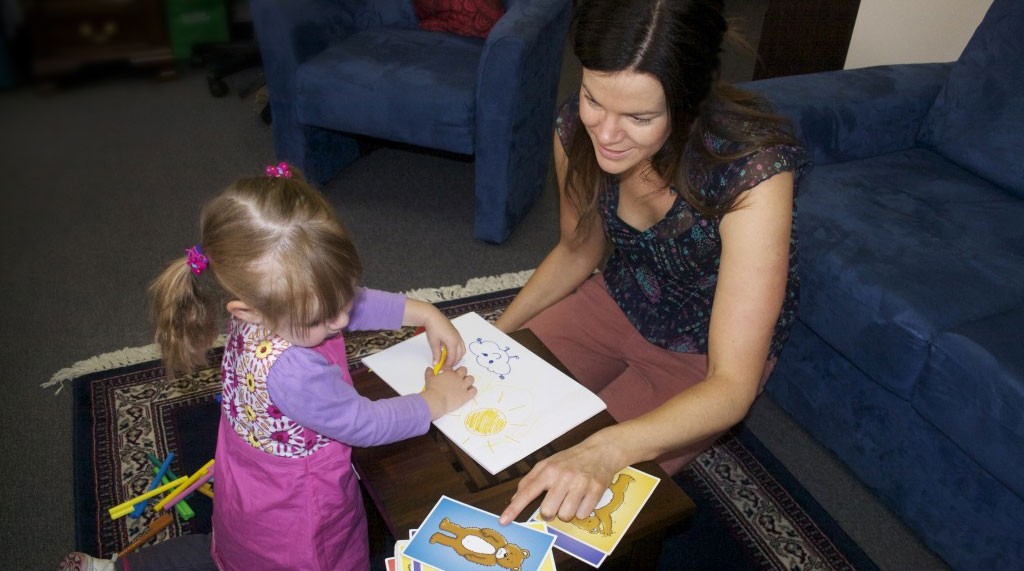What happens and how does it work?
Children may visit a child psychologist for a number of reasons. These might include:
- To receive some help with an area of their life that is challenging
- Learning about themselves and helpful ways to deal with their feelings, manage their behaviours or develop coping skills and resilience
- To have a safe space to support them through a difficult time
- Or they may come along with their parents to gain some assistance with family relationships, parenting, or some other concern
As such, parents are often curious about what exactly happens in a child psychology session, and how it differs from working with adults. Let us tell you how.
Firstly, the field of child psychology is quite broad and includes a range of different therapeutic styles, techniques, and strategies, so this blog will be relevant to what to expect when taking your child to a psychologist at SW Psychology.
Secondly, child psychology provides assistance to children aged 2-12, which is a wide range of ages and developmental stages. For children aged 2-5 years, sessions would commonly include the parents, with opportunities for the child to do some of the sessions by themselves (depending on age and reason for referral). For primary school children, the sessions may take more of an individual approach and include 1:1 sessions for your child, as well as some parent sessions, or some co-sessions with parent and child.
Thirdly, a child may see a child psychologist for a number of reasons, and these reasons will ultimately dictate the way sessions might run.
This blog outlines what might happen inside a session for children of primary school age.
Attending the First Session
Before any child attends their first session, parents are asked to attend an initial parent session, to gather some background history and information, and to discuss parent concerns. This session also allows parents to meet the psychologist, and get a feel for whether they think their child will work well with this person and in this setting.
When children attend their first session, they are usually a bit nervous and are always accompanied by their parent. The first session is really relaxed and is mainly aimed at helping the young person feel comfortable, understand what kind of things we might do in our sessions, and to get to know their therapist. Depending on age, and how comfortable the child feels with separating from their parent, parents might be asked to either stay and join in on activities and conversation, or have a seat in the waiting room for the last part of the session.
Not Just a Talking Therapy – Strategies to Engage Children
SW Psychologists utilize a range of age-appropriate activities to generate a safe, comfortable, and engaging learning and counselling space for children. The counselling room at SW Psychology is bright and friendly, with a wide range of toys and games available to use.
For smaller children, we will often use interactive play, games, activities, drawing, or visual aids to help engage children in learning about their feelings or behaviours or to help address their presenting concerns.
Some children come into their first session quite ready to talk and are happy to sit and discuss some of their challenges or concerns. Whereas some other children find it hard to communicate their feelings, don’t want to acknowledge or talk about it, or are still developing their ability to communicate how they think or feel, so it is really important to focus on building a safe and comfortable relationship to begin with, and find ways of engaging each individual child, depending upon where they are at, and what they are likely to respond positively to.
Session structure can range from being non-directive, to being a semi-structured educational learning environment, depending on the child, the treatment goals, and which kind of therapy style has been shown to be most effective for your child’s presenting concern.
While we are often addressing challenges or dealing with uncomfortable or difficult feelings, child psychology is very much a positive psychology and there is plenty of room for sessions to be a fun, interactive, empowering, rewarding and enjoyable experience – for children, parents, and for the therapists!
Parental Involvement in Child Treatment
Parents will always be involved in the overall process of the therapy. They will begin the therapy by attending the initial parent session, and will receive regular feedback on how the treatment is progressing. The level of involvement really depends once again on the reason the child is coming to therapy. Sometimes it is important for the child to have their own separate space to work through some of their feelings, behaviours, or difficulties, whereas other times it is really important for both children and parents to be learning new and more effective ways to be addressing and supporting their child, and child therapy can often be much more effective when coupled with teaching parents ways to support their child outside of the counseling room.
What is confidential and what is not?
Put simply, for any child of primary school age their individual session content is kept private, however there are some exceptions to this. In addition, if sessions are primarily child-based, then often any particular homework exercises, and the child’s progress is feedback to parents to assist in effectiveness of interventions and support outside of the counselling room.
Psychologists will go through with you and your child how the sessions will work, and some special rules about confidentiality, which is all explained in a way pitched at your child’s developmental age.
Overall, child psychology treatment is tailored to the individual needs of each child and family. If you would like to find out more, or had any questions or queries about child psychology, contact SW Psychology, who will be happy to answer any of your questions.
Written by: Shannyn Wilson – Psychologist at SW Psychology

